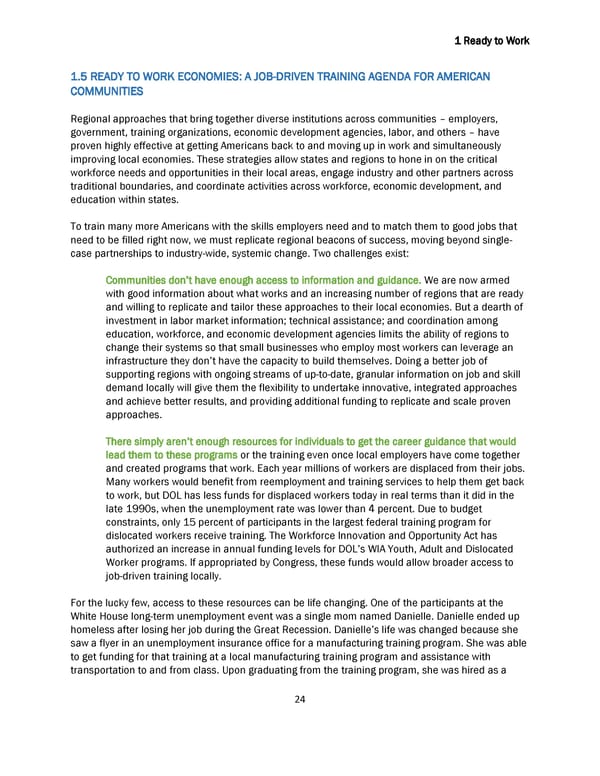1 Ready to Work 1.5 READY TO WORK ECONOMIES: A JOB-DRIVEN TRAINING AGENDA FOR AMERICAN COMMUNITIES Regional approaches that bring together diverse institutions across communities – employers, government, training organizations, economic development agencies, labor, and others – have proven highly effective at getting Americans back to and moving up in work and simultaneously improving local economies. These strategies allow states and regions to hone in on the critical workforce needs and opportunities in their local areas, engage industry and other partners across traditional boundaries, and coordinate activities across workforce, economic development, and education within states. To train many more Americans with the skills employers need and to match them to good jobs that need to be filled right now, we must replicate regional beacons of success, moving beyond single- case partnerships to industry-wide, systemic change. Two challenges exist: Communities don’t have enough access to information and guidance. We are now armed with good information about what works and an increasing number of regions that are ready and willing to replicate and tailor these approaches to their local economies. But a dearth of investment in labor market information; technical assistance; and coordination among education, workforce, and economic development agencies limits the ability of regions to change their systems so that small businesses who employ most workers can leverage an infrastructure they don’t have the capacity to build themselves. Doing a better job of supporting regions with ongoing streams of up-to-date, granular information on job and skill demand locally will give them the flexibility to undertake innovative, integrated approaches and achieve better results, and providing additional funding to replicate and scale proven approaches. There simply aren’t enough resources for individuals to get the career guidance that would lead them to these programs or the training even once local employers have come together and created programs that work. Each year millions of workers are displaced from their jobs. Many workers would benefit from reemployment and training services to help them get back to work, but DOL has less funds for displaced workers today in real terms than it did in the late 1990s, when the unemployment rate was lower than 4 percent. Due to budget constraints, only 15 percent of participants in the largest federal training program for dislocated workers receive training. The Workforce Innovation and Opportunity Act has authorized an increase in annual funding levels for DOL’s WIA Youth, Adult and Dislocated Worker programs. If appropriated by Congress, these funds would allow broader access to job-driven training locally. For the lucky few, access to these resources can be life changing. One of the participants at the White House long-term unemployment event was a single mom named Danielle. Danielle ended up homeless after losing her job during the Great Recession. Danielle’s life was changed because she saw a flyer in an unemployment insurance office for a manufacturing training program. She was able to get funding for that training at a local manufacturing training program and assistance with transportation to and from class. Upon graduating from the training program, she was hired as a 24
 Biden Ready to Work White Paper 7/22/14 Page 23 Page 25
Biden Ready to Work White Paper 7/22/14 Page 23 Page 25